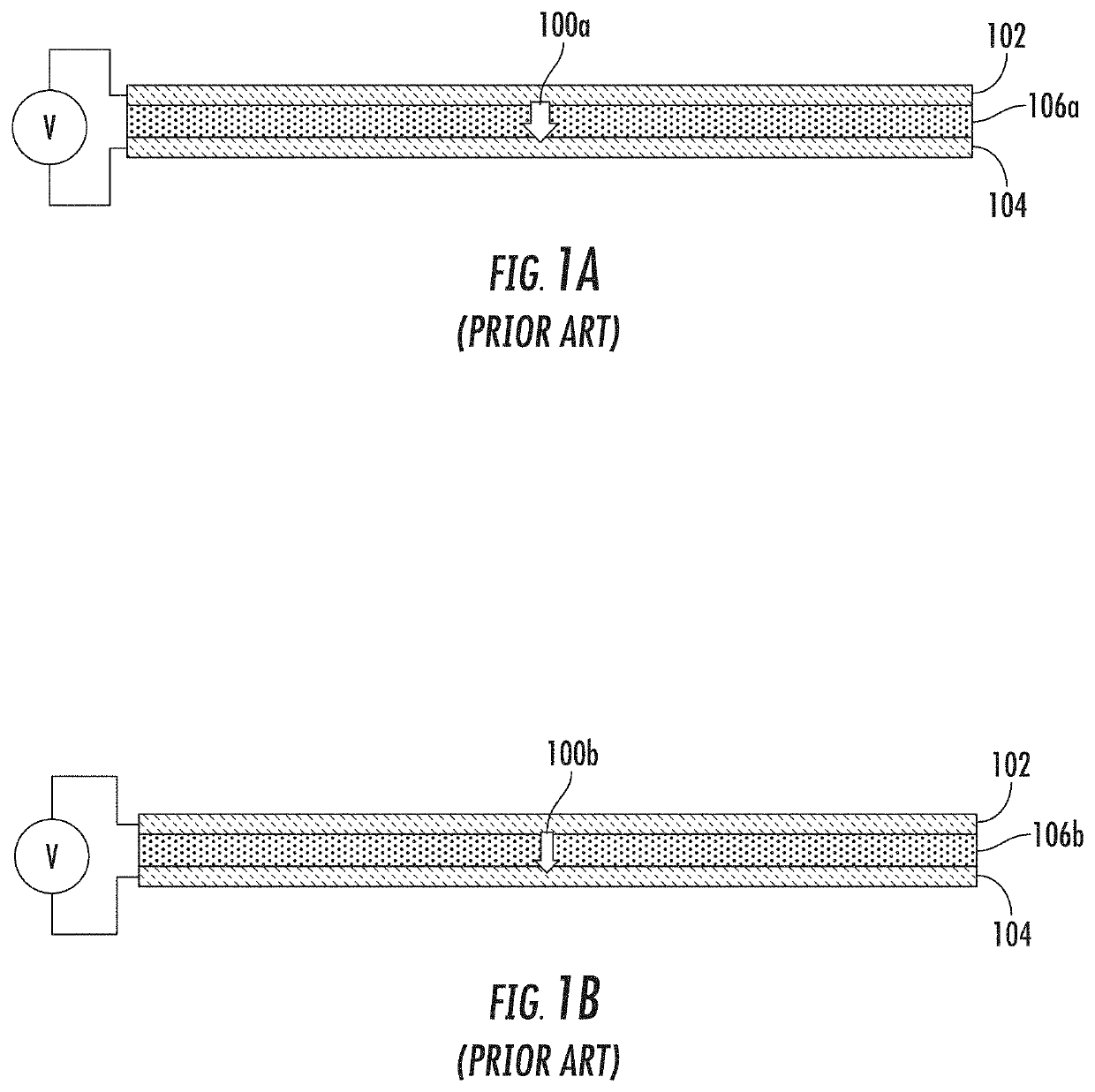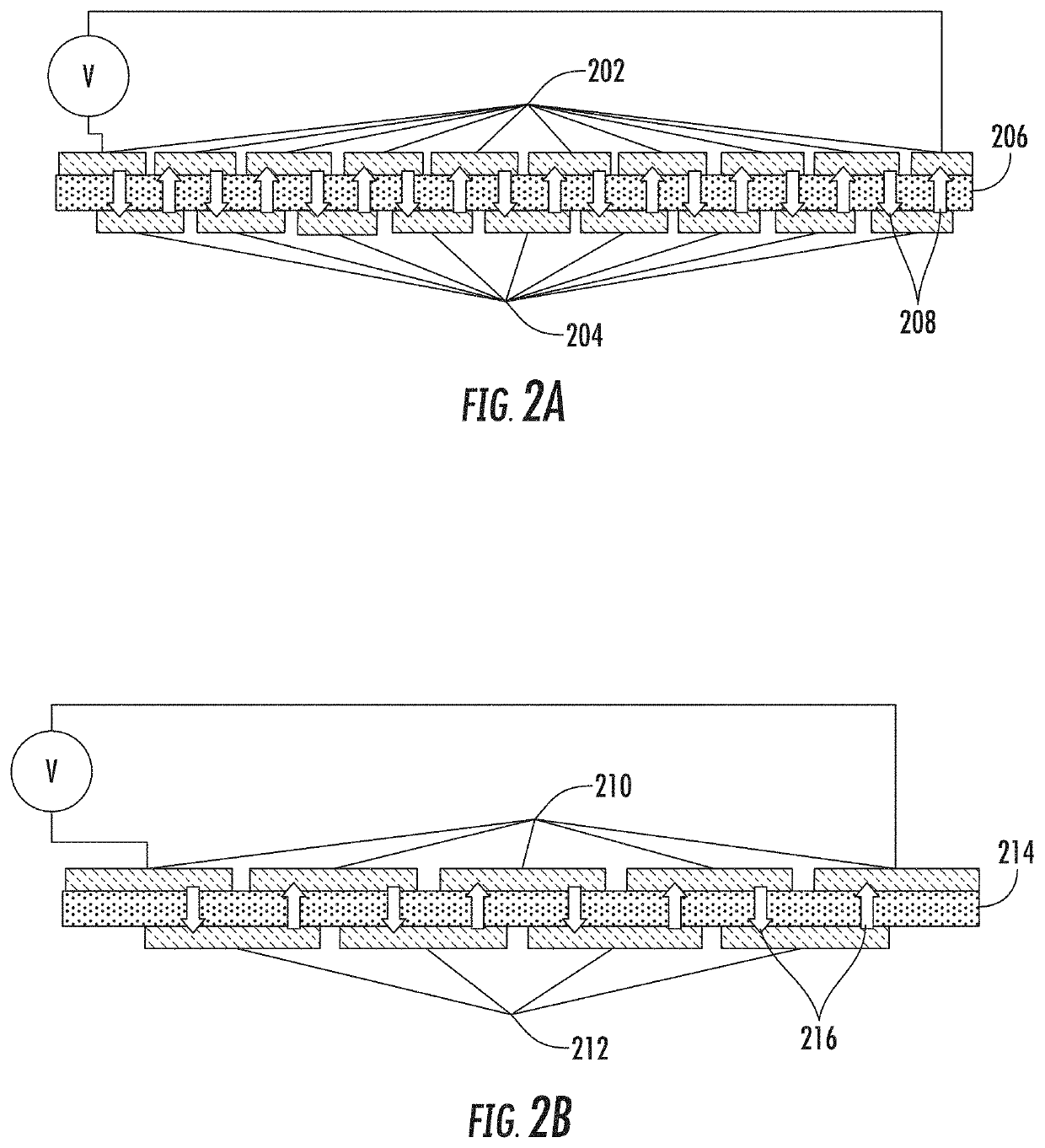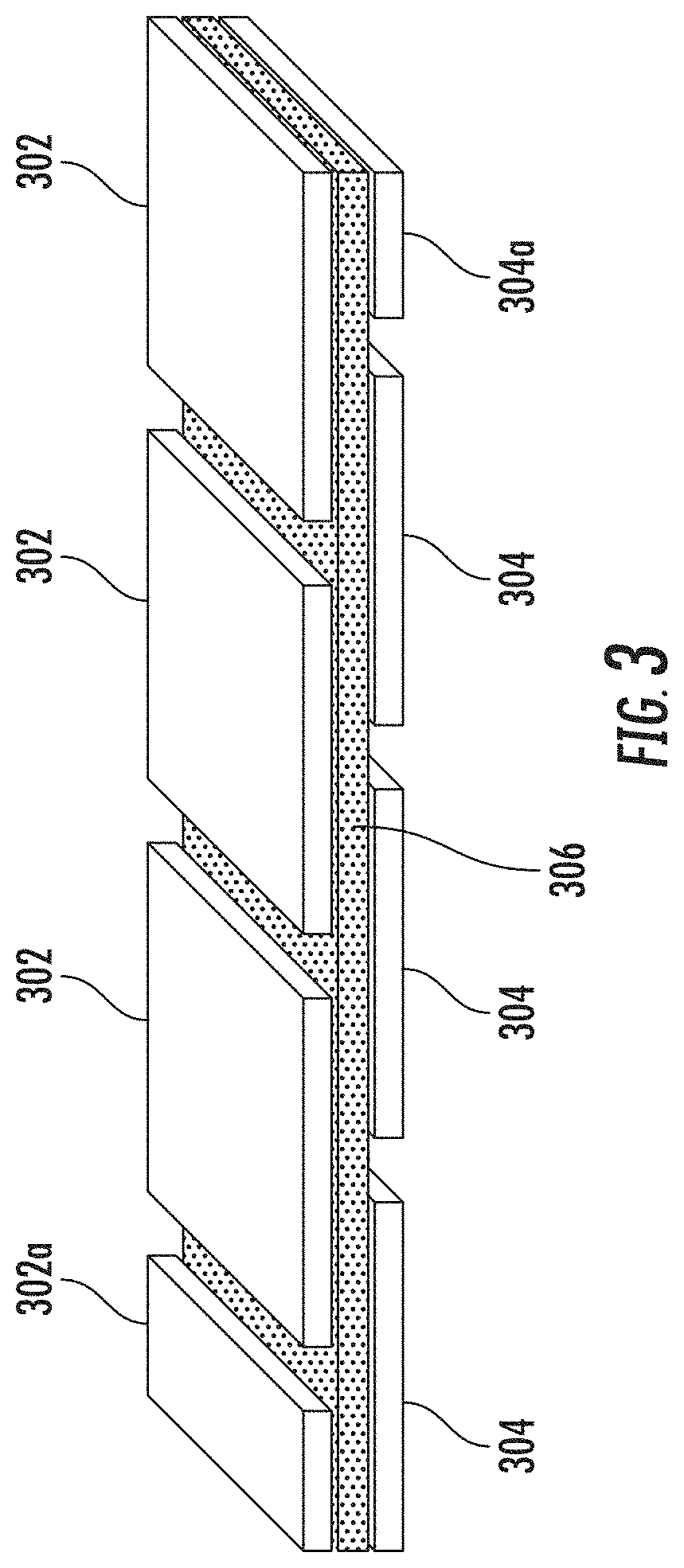Pptc heating element having varying power density
- Summary
- Abstract
- Description
- Claims
- Application Information
AI Technical Summary
Benefits of technology
Problems solved by technology
Method used
Image
Examples
Embodiment Construction
[0020]FIG. 2 shows a schematic side views of two exemplary proof-of-concept embodiments of devices in accordance with the present invention. As shown in FIG. 2(A), the upper electrically conductive layer 202 and the lower electrically conductive layer 204 have been sectioned into several portions. In this embodiment, the portions are positioned such as to force the current to oscillate between the upper layer 202 and the lower layer 204 as the current traverses the device. The path of the current as it traverses the device from left to right is shown by the arrows, showing that the current oscillates between upper layer 202 and lower layer 204 through pPTC layer 206. The passage of the current though resistive layer 206 multiple times as the current traverses the device acts as a series of resistors, with a commensurate voltage drop with each transition through the pPTC layer 206.
[0021]In preferred embodiments of the invention, the sectioned portions of upper layer 202 and lower lay...
PUM
 Login to View More
Login to View More Abstract
Description
Claims
Application Information
 Login to View More
Login to View More - R&D
- Intellectual Property
- Life Sciences
- Materials
- Tech Scout
- Unparalleled Data Quality
- Higher Quality Content
- 60% Fewer Hallucinations
Browse by: Latest US Patents, China's latest patents, Technical Efficacy Thesaurus, Application Domain, Technology Topic, Popular Technical Reports.
© 2025 PatSnap. All rights reserved.Legal|Privacy policy|Modern Slavery Act Transparency Statement|Sitemap|About US| Contact US: help@patsnap.com



